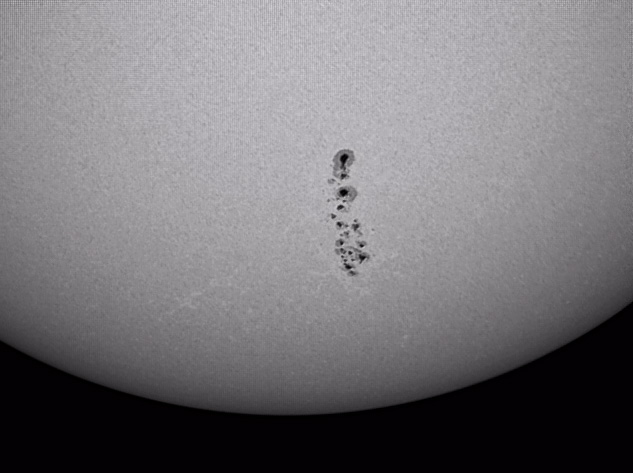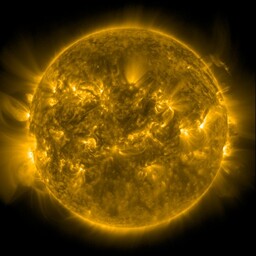Sun – our own star
The Romans called the sun Sol, which in English means sun. In ancient Greece, the sun was called Helios.
Our Sun is not unique in the universe. It is a common middle-sized yellow star which scientists have named Sol, after the ancient Roman name. This is why our system of planets is called the Solar System. There are trillions of other stars in the universe just like it. Many of these stars have their own systems of planets, moons, asteroids, and comets.
The Sun was born in a vast cloud of gas and dust around 5 billion years ago. Indeed, these vast nebulae are the birth places of all stars. Over a period of many millions of years, this gas and dust began to fall into a common center under the force of its own gravity.
At the center, an ever growing body of mass was forming. As the matter fell inward, it generated a tremendous amount of heat and pressure. As it grew, the baby Sun became hotter and hotter. Eventually, when it reached a temperature of around 1 million degrees, its core ignited, causing it to begin nuclear fusion.
When this happened, the Sun began producing its own light, heat, and energy.
Thermonuclear Fusion is the process in which a star produce its light, heat, and energy. This happens at the core of the star. The core is superheated to millions of degrees. This heat travels towards the surface and radiates out into the universe. Through this thermonuclear process, stars “burn” a fuel known as hydrogen. The result is that they create another type of fuel known as helium. However, stars do not burn in the same way that a fire does, because stars are not on fire.
Sunspots
We don’t often think of the Sun as having cooler areas on its surface. The Sun is far too hot for an astronaut to ever visit, but there are areas which are slightly cooler than others. These areas are known as sunspots. Sunspots are still very hot. However, because they are slightly cooler than the rest of the surface of the Sun, they appear slightly darker in color. The gravitational forces in Sunspots are also stronger than the other hotter areas. Of course, you cannot look directly at the Sun to see these spots because you would damage your eyes. Astronomers have to use special telescopes with filters and other instruments to be able to see the cooler spots on the surface of the Sun.
Sunspots come and go on a regular basis. At times, there are very few, if any sunspots. At other times there are far more. They generally increase in intensity and then decrease over a period of 11 years.

A very large Sunspots region.
Solar Flares
During periods of high solar activity, the Sun commonly releases massive amounts of gas and plasma into its atmosphere. These ejections are known as solar flares. Some solar flares can be truly massive, and contain impressive power. On occasion, these more powerful flares can even cause satellites orbiting the Earth to malfunction. They can also interact with Earth’s magnetic field to create impressive and beautiful light shows known as the Northern and Southern lights. In the northern hemisphere, these lights are commonly known as the Aurora Borealis.

Northern Lights – Aurora Borealis
Solar Wind
As the Sun burns hydrogen at its core, it releases vast amounts of atomic particles, or pieces of atoms, into outer space. These atomic particles along with the Sun’s radiation create a sort of wind, known as the solar wind.
This wind blows particles outward in all directions from the Sun. Even as you read this, there are atomic particles which are traveling from the Sun towards you. Often, particles pass right through your body without you ever realizing it.
The Sun’s Family
The Sun is by far the largest object in the Solar System. 98% of all matter within the Solar System is found within the Sun. This means that all the planets, moons, asteroids, minor planets, comets, gas, and dust would all combine to make up only 2% of all the matter in the Solar System. The Sun is so large that the Earth could easily fit inside the Sun a million times.
Because the Sun is so large compared to everything else, it is easily able to hold on to the rest of the matter, causing everything else to orbit around it.






